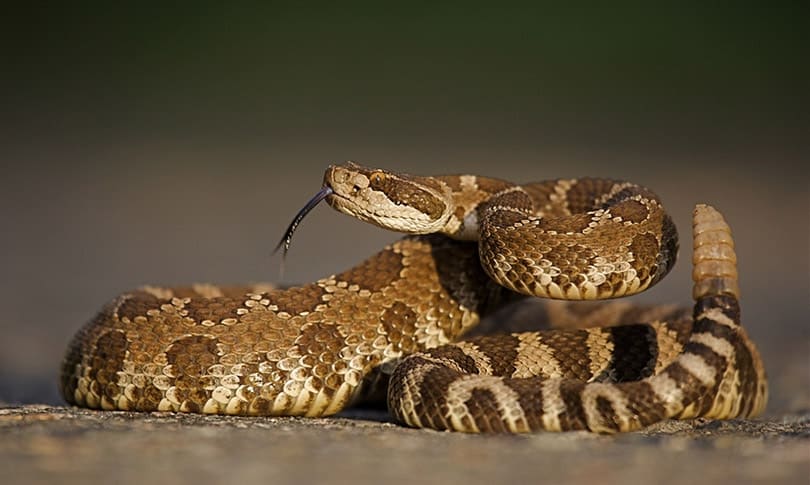Texas is the second-largest state in the United States. With such a large land size, there are many different types of ecosystems in the Lone Star State. There are approximately 115 species of snakes that are native to Texas.
We’ve compiled a list of 33 of the most common species of snake that Texas has to offer. After all, with such a vast landscape, it’s expected to have quite the variety.

The 33 Snakes Found in Texas
The 14 Venomous Species of Snakes
1. Western Diamondback Rattlesnake
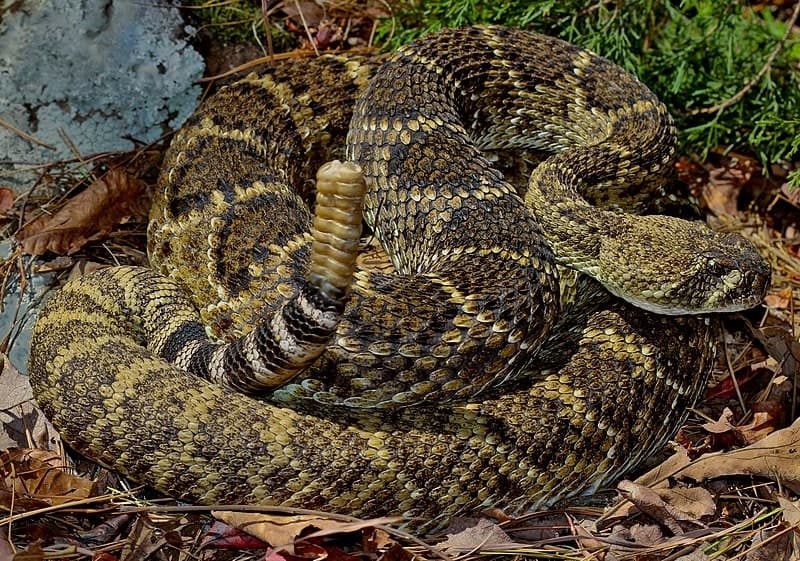
| Species: | Crotalus Atrox |
| Longevity: | 15–20 years |
| Good to own as a pet?: | No |
| Legal to own?: | Yes |
| Adult size: | 3–5 ft |
| Diet: | Carnivorous |
The Western Diamondback rattlesnake can be found in a variety of habitats including grasslands, forests, plains, scrub, rocky canyons, and deserts. The Western Diamondback rattlesnake is the most widespread venomous snake in the state of Texas. Their venom is very potent but very few deaths are reported. Anyone bit will need to seek medical attention immediately.
2. Timber Rattlesnake
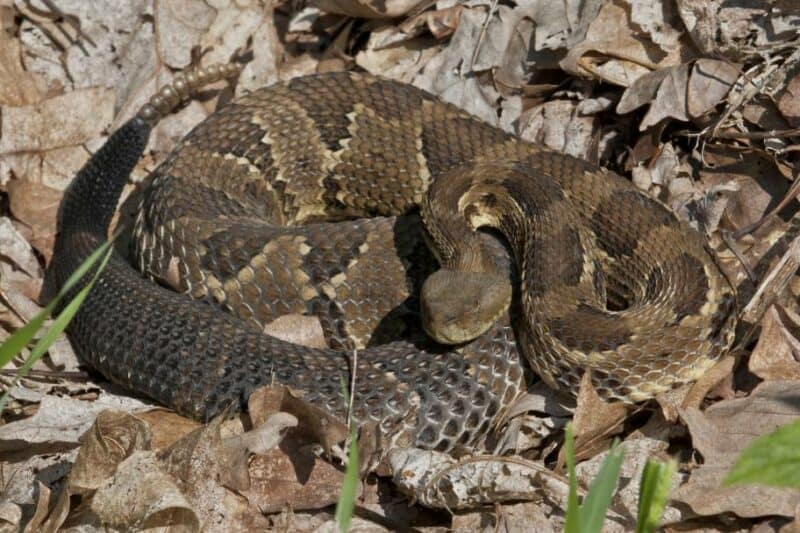
| Species: | Crotalus horridus |
| Longevity: | 15–30 years |
| Good to own as a pet?: | No |
| Legal to own?: | Yes |
| Adult size: | 2.5–5 ft |
| Diet: | Carnivorous |
Timber rattlesnakes are found in a variety of areas including mountainous areas, pine & hardwood forests, farming areas, lowland thickets, and higher areas near bodies of water. The timber rattlesnake has a brown or yellowish to a grayish body, but some individuals can get very dark.
3. Western Massasauga Rattlesnake
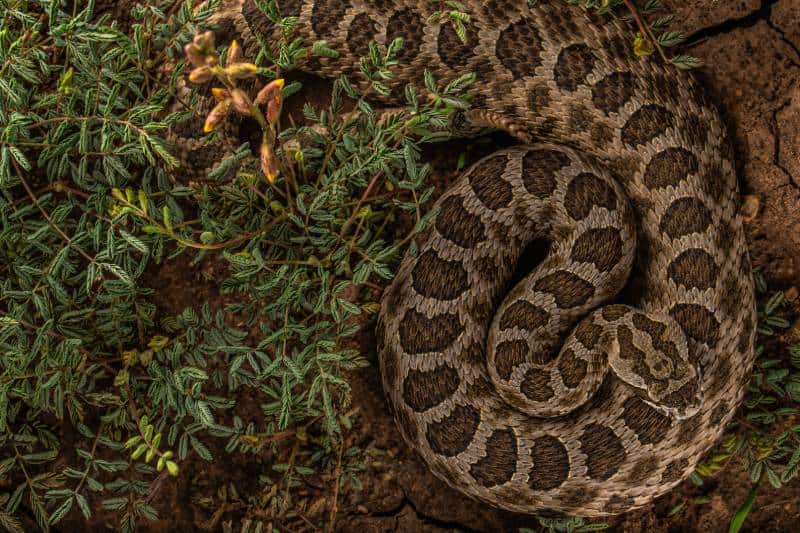
| Species: | Sistrurus catenatus |
| Longevity: | 15–20 years |
| Good to own as a pet?: | No |
| Legal to own?: | Yes |
| Adult size: | 1–3 ft |
| Diet: | Carnivorous |
The Western Massasauga lives in prairies from the Texas Gulf Coast up to the Texas Panhandle. Western Massasaugas are paler with a light gray or tan-gray background coloration with contrasting dark brown markings.
4. Desert Massasauga Rattlesnake
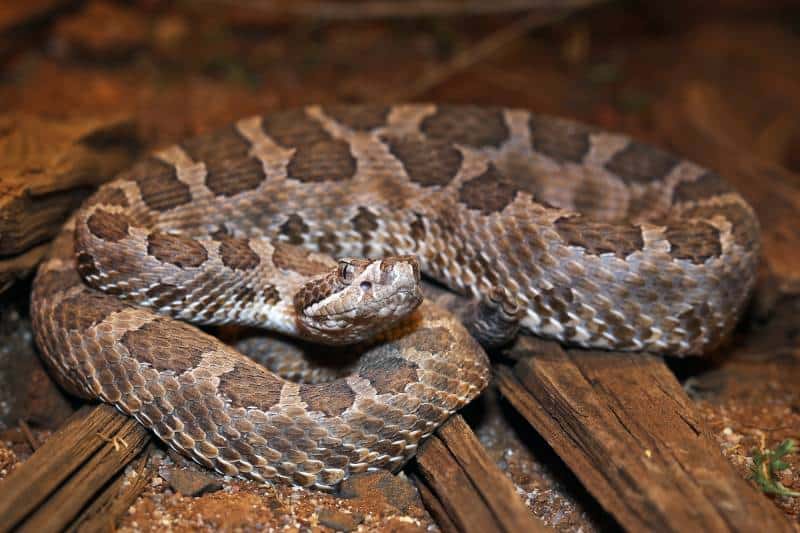
| Species: | S.c. edwardsii |
| Longevity: | 15–20 years |
| Good to own as a pet?: | No |
| Legal to own?: | Yes |
| Adult size: | 1.5–2.5 ft |
| Diet: | Carnivorous |
Similar to the Western Massasauga, these desert-dwelling snakes are even lighter in color. The belly is nearly white and has no markings. This species has a localized distribution in the southeast corner of Arizona, through central and southern New Mexico, and into western Texas.
5. Mojave Rattlesnake
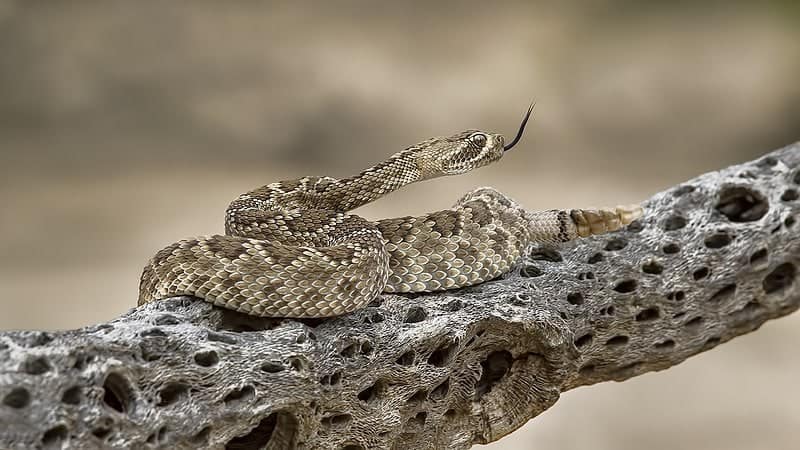
| Species: | Crotalus scutulatus |
| Longevity: | 10–20 years |
| Good to own as a pet?: | No |
| Legal to own?: | Yes |
| Adult size: | 3–4.5 ft |
| Diet: | Carnivorous |
The Mojave rattlesnake is like the western diamondback in markings. They are a smaller, slenderer species found only in extreme West Texas.
6. Pygmy Rattlesnake

| Species: | Sistrurus miliarius |
| Longevity: | 15–30 years |
| Good to own as a pet?: | No |
| Legal to own?: | Yes |
| Adult size: | 14–22 in |
| Diet: | Carnivorous |
The Pygmy Rattlesnake is known locally as the rattle-less ground rattler. It is unevenly dispersed through East Texas. Their patterns vary in colors such as black, tan, grey, brown, light red, and light pink.
7. Prairie Rattlesnake
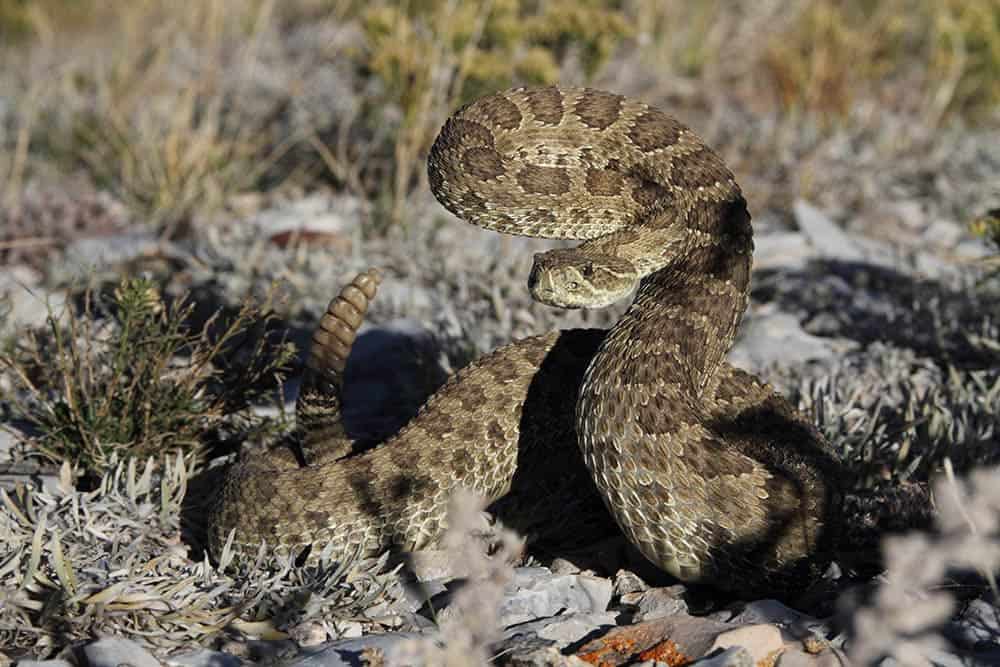
| Species: | Crotalus viridis |
| Longevity: | 16–20 years |
| Good to own as a pet?: | No |
| Legal to own?: | Yes |
| Adult size: | 35–45 in |
| Diet: | Carnivorous |
Prairie rattlesnakes are native to the western United States, southwestern Canada, and northern Mexico. They are lightly colored brown with patches of dark brown pattern distributed dorsally.
8. Blacktail Rattlesnake

| Species: | Crotalus molossus |
| Longevity: | 15–20 years |
| Good to own as a pet?: | No |
| Legal to own?: | Yes |
| Adult size: | 3–4 ft |
| Diet: | Carnivorous |
This species is among the most docile and rare rattlesnakes. They range in color from yellows to browns and black. Their most distinguishing feature is their entirely black tail scales. This species is found in portions of Western Texas.
9. Banded Rock Rattlesnake

| Species: | Crotalus lepidus klauberi |
| Longevity: | 20–30 years |
| Good to own as a pet?: | No |
| Legal to own?: | Yes |
| Adult size: | 23–27 in |
| Diet: | Carnivorous |
This striking species is light gray with dark, gray-black bands along the length of its body. They have a very limited range in Texas, only occurring in the Franklin Mountains of El Paso county.
10. Mottled Rattlesnake
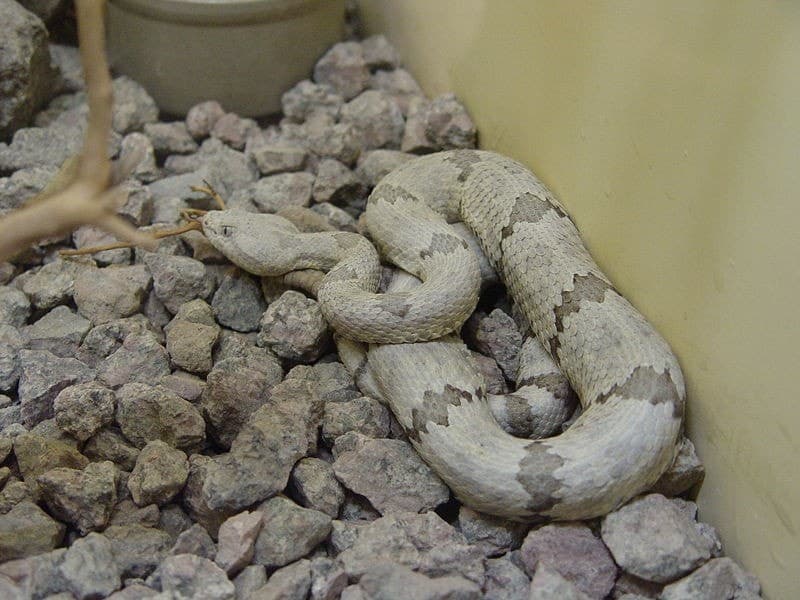
| Species: | Crotalus lepidus |
| Longevity: | 10 – 20 years |
| Good to own as a pet?: | No |
| Legal to own?: | Yes |
| Adult size: | 1.5–2 ft |
| Diet: | Carnivorous |
Small and slender with an average length of about two feet. Found in the mountainous areas of West Texas. They are highly variable in pattern and color, though usually gray with dark bands but can range from tan to pinkish.
11. Broadband Copperhead

| Species: | Agkistrodon contortrix laticinctus |
| Longevity: | 15–20 years |
| Good to own as a pet?: | No |
| Legal to own?: | Yes |
| Adult size: | 20–30 inches |
| Diet: | Carnivorous |
The broad-banded copperhead is a sub-species of Copperhead native to the state. They are known to populate the regions from central Texas north to the southern border of Kansas and Oklahoma.
12. Eastern Copperhead

| Species: | Agkistrodon contortrix |
| Longevity: | 15–20 years |
| Good to own as a pet?: | No |
| Legal to own?: | Yes |
| Adult size: | 2–3 ft |
| Diet: | Carnivorous |
Copperhead snakes have bands of gray and/or brown with a copper-colored head. They blend in with leaf-covered forest floors. Copperheads bite rather than strike. They are so well camouflaged in their surroundings that most bites occur when the snake is accidentally picked up or stepped on. Copperheads like to seek refuge under logs, boards, and other objects and it’s best to use caution when flipping them over.
13. Western Cottonmouth/Water Moccasin
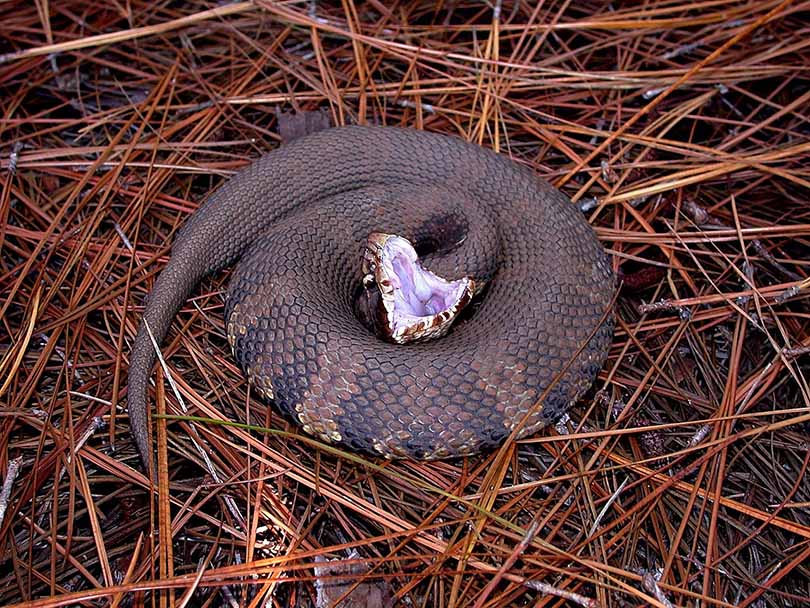
| Species: | Agkistrodon piscivorous |
| Longevity: | 15–20 years |
| Good to own as a pet?: | No |
| Legal to own?: | Yes |
| Adult size: | 30–48 inches |
| Diet: | Carnivorous |
Also known as water moccasins, this species can be dark brown, olive-brown, olive green, or almost solid black. They are marked with wide, dark bands. The cottonmouth gets its name from the white tissue inside its mouth, which it displays when threatened. This is a heavy-bodied snake, which averages about 3.5 feet in length. They are found over the central and eastern half of the state in swamps, slow waterways, coastal marshes, rivers, ponds, and streams.
14. Texas Coral Snake
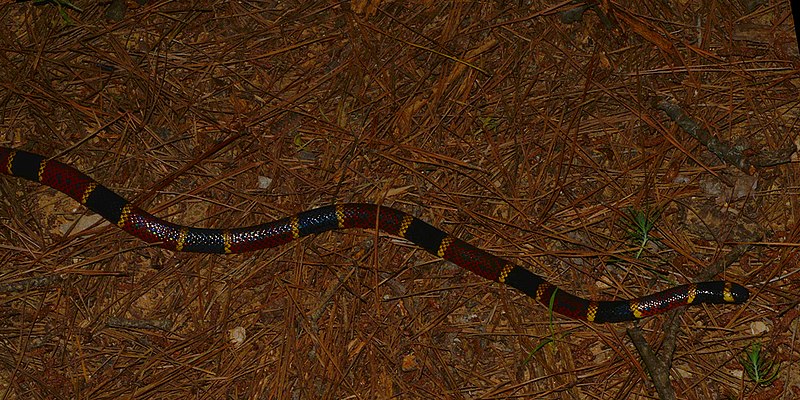
| Species: | Micrurus tener |
| Longevity: | 7–10 years |
| Good to own as a pet?: | No |
| Legal to own?: | Yes |
| Adult size: | 3–5 ft |
| Diet: | Carnivorous |
Only one species of coral snake is native to Texas. The coral snake is a very shy species and is rarely encountered. It has, in order, red, yellow, and black colors. The coral snake has a small mouth and is usually not aggressive. The coral snake rarely ever bites, but if they do it is dangerous.

The 19 Non-Venomous Types of Snakes in Texas
15. Western Rat Snake
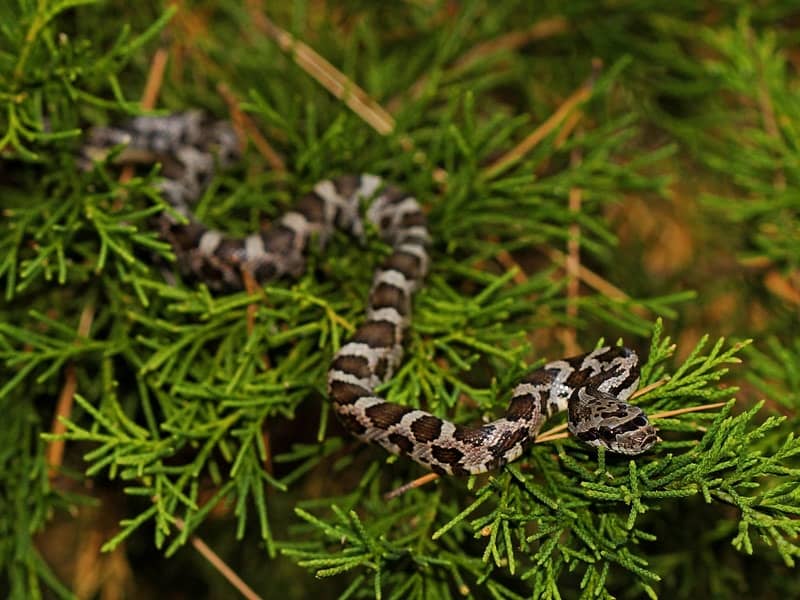
| Species: | Pantherophis obsoletus |
| Longevity: | 10–15 years |
| Good to own as a pet?: | Yes |
| Legal to own?: | Yes |
| Adult size: | 3.5–6 ft |
| Diet: | Carnivorous |
The Western Rat Snake is one of the most commonly encountered species of non-venomous snake in North Texas and this is especially common in the Dallas/Fort Worth area. They are found in a wide range of environments including forest, grasslands, suburban and urban settings. They pose no harm.
16. Rough Green Snake
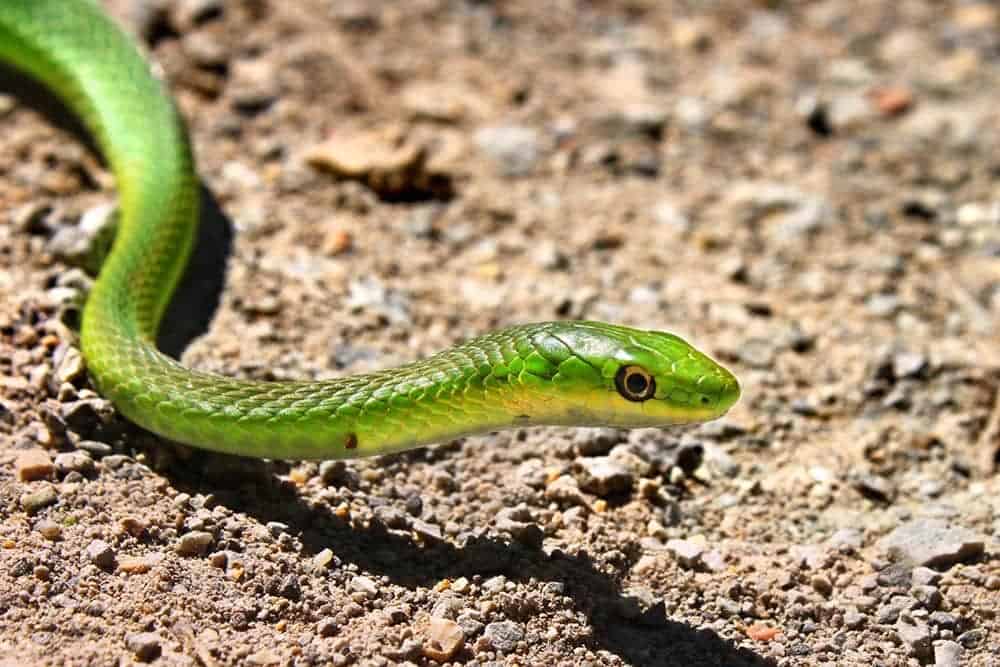
| Species: | Opheodrys aestivus |
| Longevity: | 15–20 years |
| Good to own as a pet?: | Yes |
| Legal to own?: | Yes |
| Adult size: | 2.5–3 ft |
| Diet: | Carnivorous |
Bright green dorsal coloration is in contrast to a white chin and pale green, yellow, or cream-colored belly. This snake is found throughout the southeastern U.S., from Virginia along the Atlantic Coast to Florida and west throughout much of Texas. Populations are also found in Mexico, along the Gulf of Mexico.
17. Texas Garter Snake
| Species: | Thamnophis sirtalis annectens |
| Longevity: | 4–10 years |
| Good to own as a pet?: | No |
| Legal to own?: | Yes |
| Adult size: | 23–30 inches |
| Diet: | Carnivorous |
The Texas Garter snake resembles the regular garter snake. They are uncommon, even in their central Texas range. They can be found in a wide range of habitats but remain close to a water source.
18. Western Hognose Snake
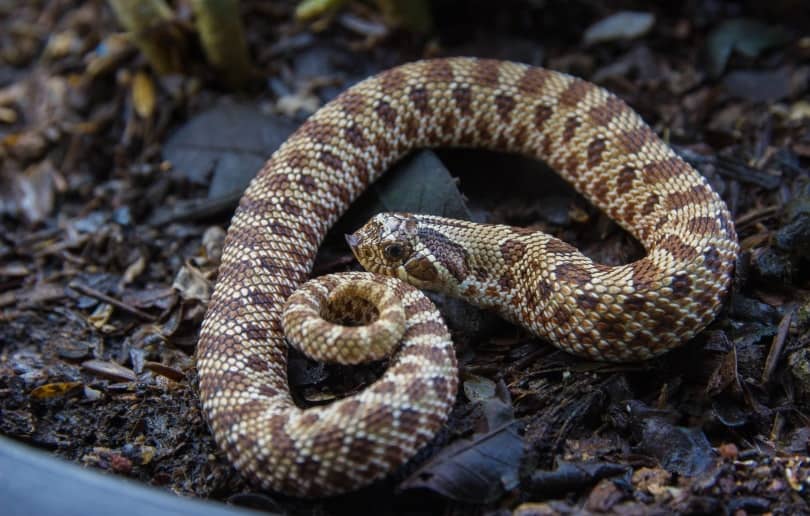
| Species: | Heterodon nasicus |
| Longevity: | 15–20 years |
| Good to own as a pet?: | Yes |
| Legal to own?: | Yes |
| Adult size: | 14–24 inches |
| Diet: | Carnivorous |
The Western Hognose snake exists throughout most of the eastern half of Texas. Even though it is harmless, this snake puts on a dramatic defensive display. It is most distinguishable by its pointy, upturned snout.
19. Western Coachwhip
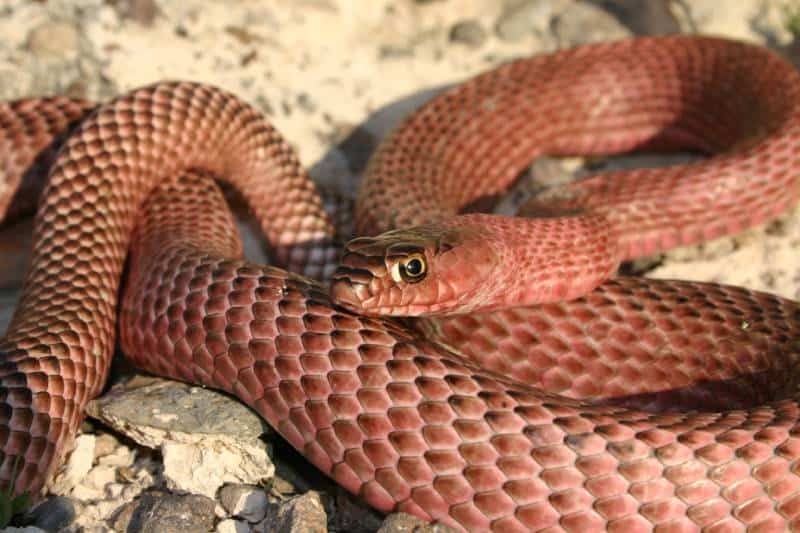
| Species: | Masticophis flagellum testaceus |
| Longevity: | 10–20 years |
| Good to own as a pet?: | No |
| Legal to own?: | Yes |
| Adult size: | 3–6 ft |
| Diet: | Carnivorous |
This snake is found throughout West and Central Texas. The Coachwhip is a non-venomous snake often called the “Red Racer”. They vary in color quite a bit but tend to take on a brownish-red coloration.
20. Ring-Necked Snake
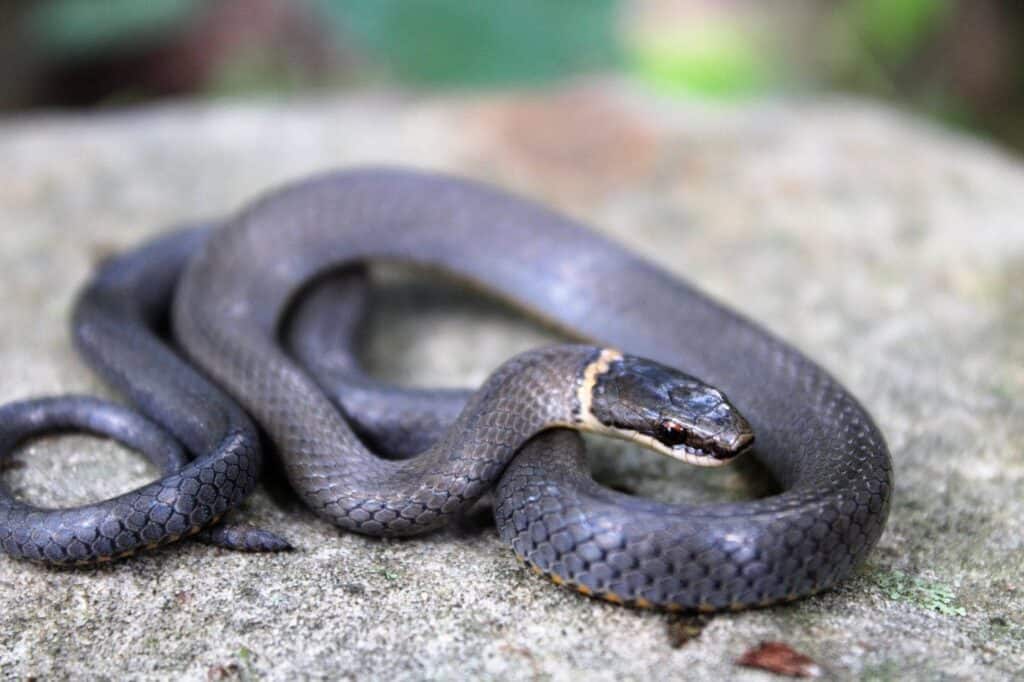
| Species: | Diadophis punctatus |
| Longevity: | 6–10 years |
| Good to own as a pet?: | No |
| Legal to own?: | Yes |
| Adult size: | 10–16 inches |
| Diet: | Carnivorous |
The ring-necked snake is an olive-colored snake often found under rocks and logs. Much more common in areas of high moisture, they are found sporadically throughout the drier areas of Texas.
21. Speckled Kingsnake

| Species: | Ampropeltis getula holbrooki |
| Longevity: | 15–20 years |
| Good to own as a pet?: | Yes |
| Legal to own?: | Yes |
| Adult size: | 3–4 ft |
| Diet: | Carnivorous |
Also referred to as the common kingsnake, the speckled kingsnake is a moderately large, black snake with smooth scales with irregular yellow markings giving them their signature speckled appearance.
22. Prairie Kingsnake
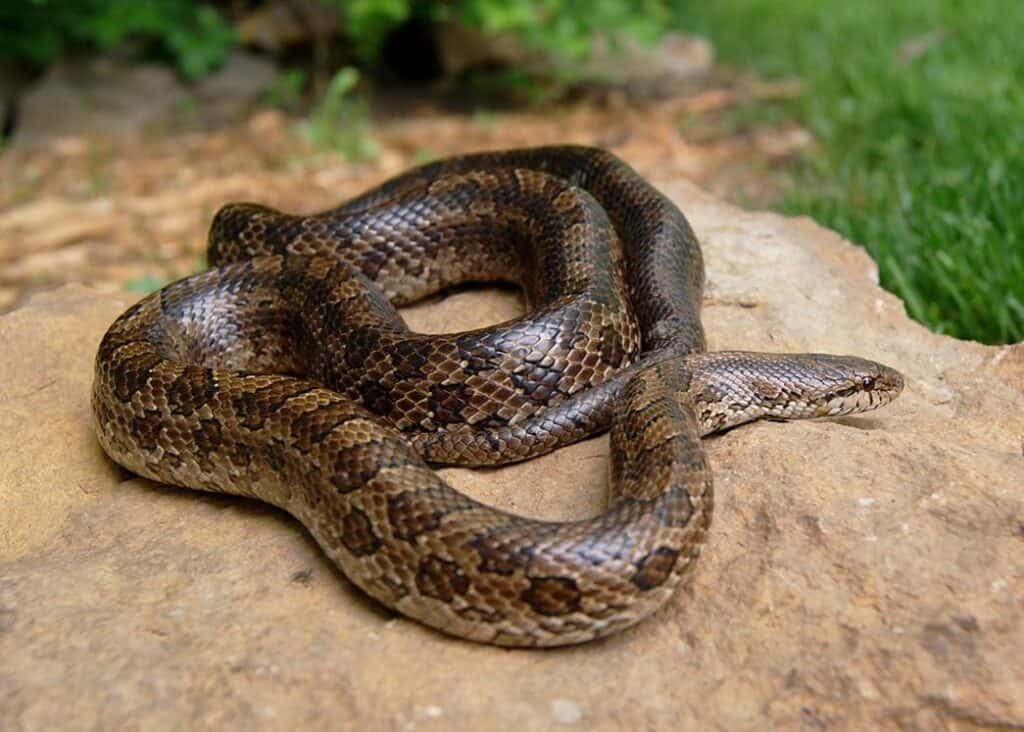
| Species: | Lampropeltis calligaster |
| Longevity: | 15–25 years |
| Good to own as a pet?: | Yes |
| Legal to own?: | Yes |
| Adult size: | 2–3 ft |
| Diet: | Carnivorous |
Prairie kingsnakes are moderate-sized snakes with smooth, shiny scales, background color of gray or light brown. They exhibit a series of dark blotches down their body. This species is found in the eastern half of Texas with some populations found in the Eastern Panhandle and isolated populations in south Texas.
23. Milk Snake

| Species: | Lampropeltis triangulum |
| Longevity: | 15–20 years |
| Good to own as a pet?: | Yes |
| Legal to own?: | Yes |
| Adult size: | 2–6 ft |
| Diet: | Carnivorous |
Milk snakes look like highly venomous coral snakes-they both have bands of black, red, and yellow but the order in which the pattern is distributed is different. Milk snakes are commonly kept as pets and are harmless to humans.
24. Bull Snake

| Species: | Pituophis catenifer |
| Longevity: | 10–25 years |
| Good to own as a pet?: | Yes |
| Legal to own?: | Yes |
| Adult size: | 4–6 ft |
| Diet: | Carnivorous |
The Bull Snake has an overall beige to light brown coloration with dark brown or black blotches. Their belly is yellowish with black spots. This snake is found throughout Texas in grasslands, brushlands, and sandy fields.
25. Lined Snake
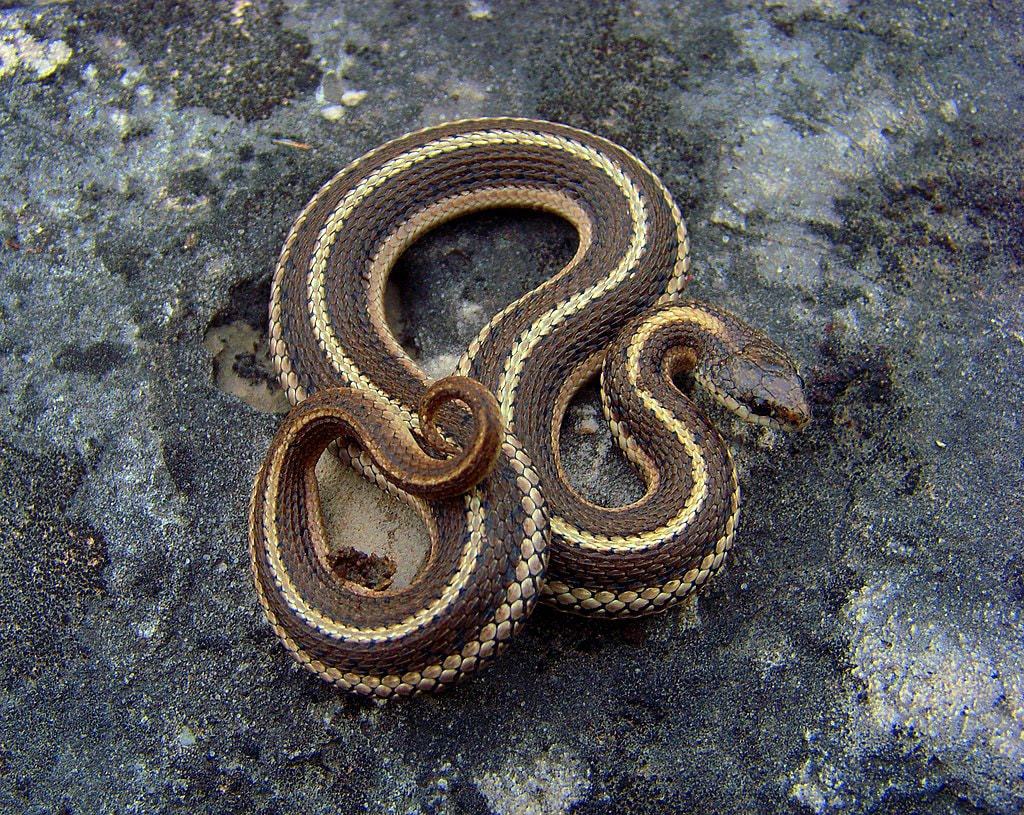
| Species: | Tropidoclonion lineatum |
| Longevity: | 4–10 years |
| Good to own as a pet?: | No |
| Legal to own?: | Yes |
| Adult size: | 8–10 inches |
| Diet: | Carnivorous |
This snake resembles a small garter snake. The lined snake is about 8 to 10 inches long. They are found in prairies, grasslands, pastures, woodland edges, and even city parks, and backyards. They tend to hide under debris during the day and come out at night to hunt earthworms.
26. DeKay’s Brown Snake
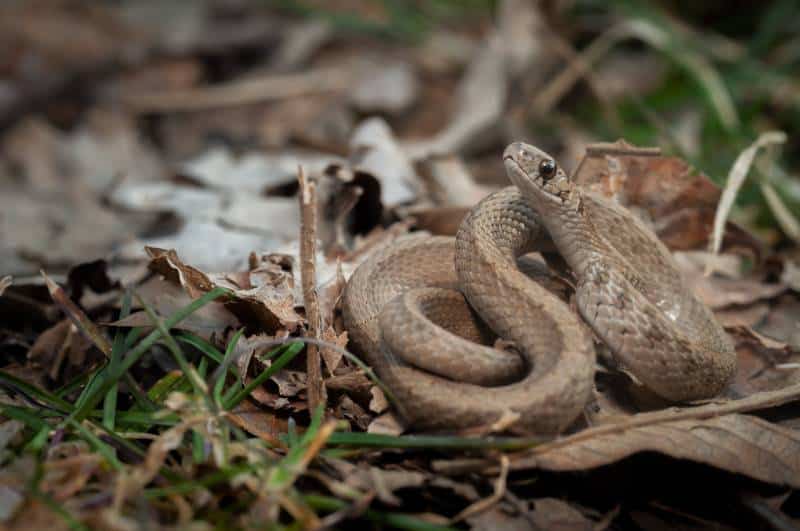
| Species: | Storeria dekayi |
| Longevity: | 5–7 years |
| Good to own as a pet?: | No |
| Legal to own?: | Yes |
| Adult size: | 10–15 inches |
| Diet: | Carnivorous |
This species background coloration is tan, brown, or reddish-brown with a pale middorsal stripe. Named after a New York Naturalist, they are found in the east of the Rocky Mountains in the United States.
27. Plain-Bellied Water Snake
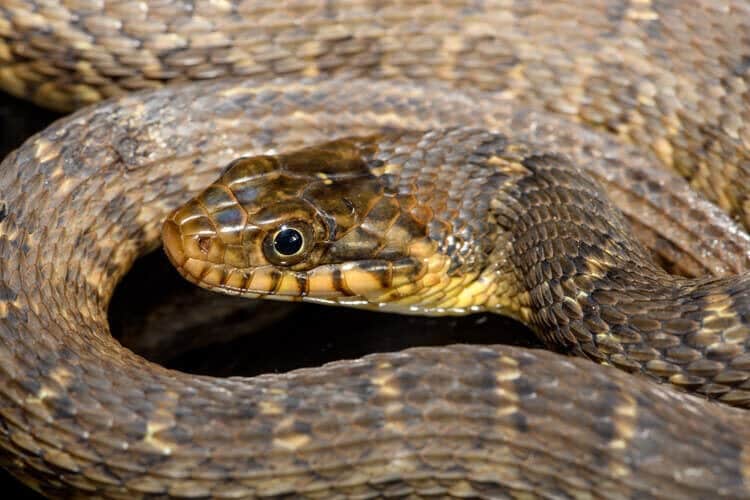
| Species: | Nerodia erythrogaster |
| Longevity: | 8–15 years |
| Good to own as a pet?: | No |
| Legal to own?: | Yes |
| Adult size: | 3–4 ft |
| Diet: | Carnivorous |
Plain-Bellied Water Snakes are large and heavy-bodied. They are usually found in, near, or above the water on tree branches or shrubs. They are very similar to diamondback water snakes.
28. Diamond-Backed Water Snake
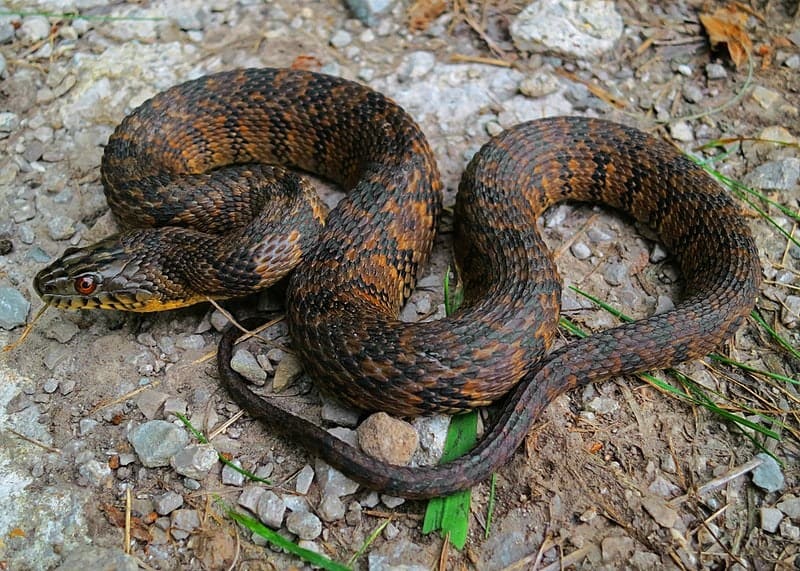
| Species: | Nerodia rhombifer |
| Longevity: | 8–12 years |
| Good to own as a pet?: | No |
| Legal to own?: | Yes |
| Adult size: | 2.5–4 ft |
| Diet: | Carnivorous |
This snake’s habitat consists of ponds, lakes, streams, rivers, and wetland areas. As with most water snakes, they can be confused with the venomous cottonmouth. These snakes are non-venomous but will emit a foul-smelling musk when intimidated.
29. Yellow-Bellied Racer

| Species: | Coluber constrictor flaviventris |
| Longevity: | 6–10 years |
| Good to own as a pet?: | No |
| Legal to own?: | Yes |
| Adult size: | 3–5 ft |
| Diet: | Carnivorous |
The Yellow-Bellied Racer is active during the daytime. They live in the Texas prairies, grasslands, pastures, brushy fields, open woods, and along the edges of forests. They range in color from olive, tan, brown, or blue to gray or nearly black. The belly may be yellow, cream, or light blue-gray.
30. Rough Earth Snake
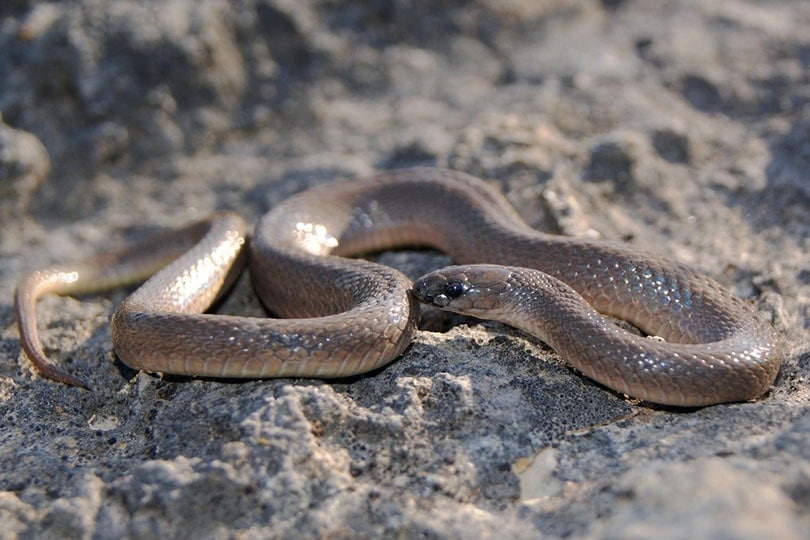
| Species: | Virginia striatula |
| Longevity: | 7–10 years |
| Good to own as a pet?: | No |
| Legal to own?: | Yes |
| Adult size: | 7–10 in |
| Diet: | Carnivorous |
This small snake is abundant in Texas, but is also found throughout most of the United States. You’ll typically find it in forested areas where it can find lots of ground cover, including fallen leaves, debris, or fallen trees.
31. Blind Snake
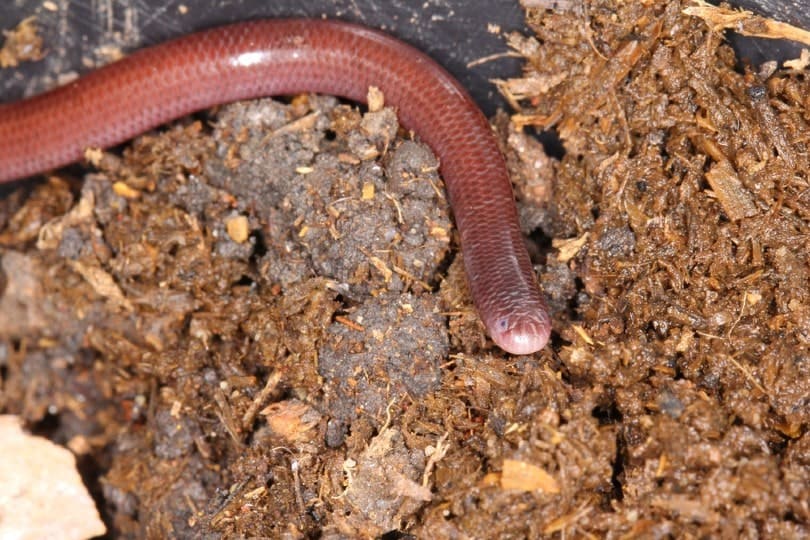
| Species: | Leptotyphlops dulcis |
| Longevity: | 6 years |
| Good to own as a pet?: | No |
| Legal to own?: | Yes |
| Adult size: | 7–8 cm |
| Diet: | Carnivorous |
This snake is shy and secretive. They are commonly found under the cover of logs, rocks, and other debris and are located all over the forested areas of eastern Texas.
32. Buttermilk Racer
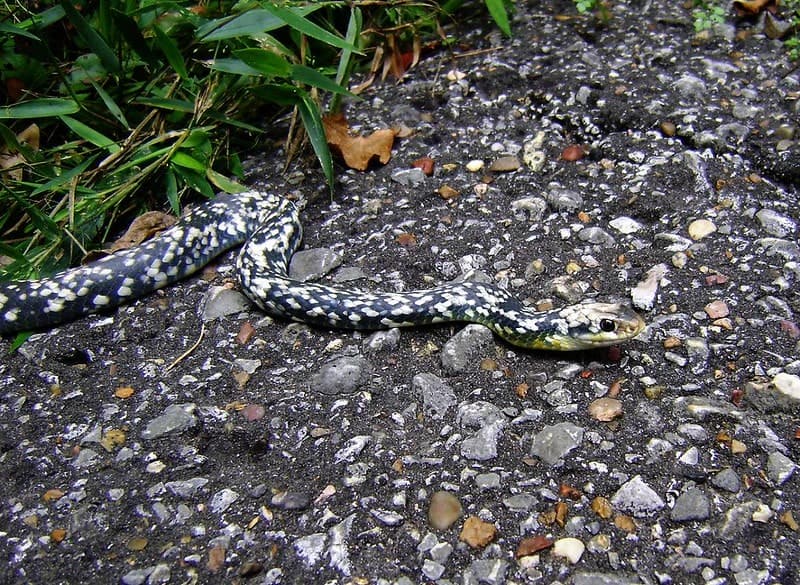
| Species: | Coluber constrictor anthicus |
| Longevity: | 6–10 years |
| Good to own as a pet?: | No |
| Legal to own?: | Yes |
| Adult size: | 3–5 ft |
| Diet: | Carnivorous |
The Buttermilk Racer is a subspecies of the eastern racer. Their coloring is a unique pattern of black, greens, yellows, greys, and sometimes blues. Their bodies are flecked with white or yellow in the scales and their belly is white or cream-colored.
33. Texas Indigo
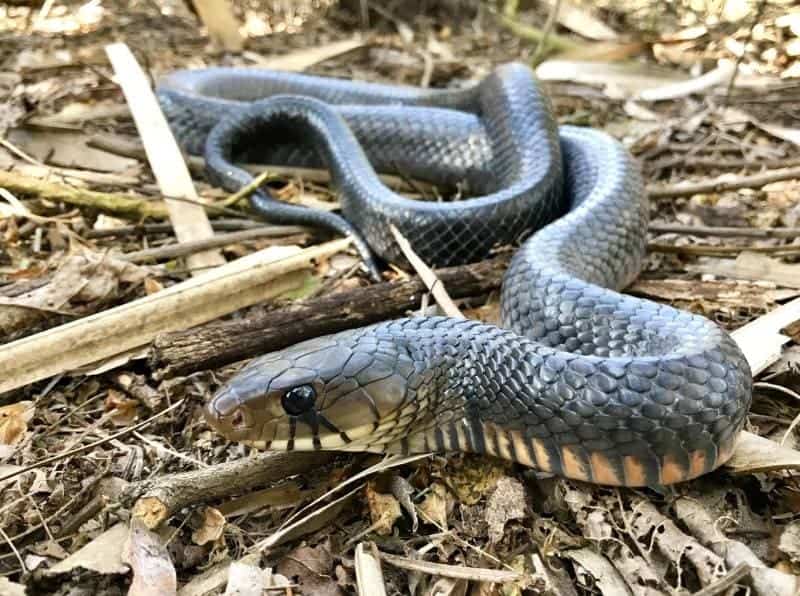
| Species: | Drymarchon melanurus erebennus |
| Longevity: | 10–20 years |
| Good to own as a pet?: | No |
| Legal to own?: | Yes |
| Adult size: | 5–8.5 ft |
| Diet: | Carnivorous |
In both length and weight, the Indigo Snake is one of the largest species of harmless snakes in the state of Texas. With a glossy, iridescent, blue-black coloration of the head and body, they may have red, reddish-orange, or cream coloration on the chin or throat area. The Indigo became federally protected in 1978.

Conclusion
Texas is home to many species and subspecies of snakes. Most snakes in Texas are not harmful to humans and even benefit people by eating rodents and insects.
Texas is also home to some of the most venomous snakes in the United States, meaning that their bite can cause severe injury or death if untreated.
Though some of these snakes are regularly kept as pets, it is never recommended to take a wild snake from their natural habitat and attempt to make them into your pet. If you’re interested in a pet snake, you can locate a reputable captive snake breeder by doing your research or going to a local reptile show.
We also have the 11 Lizards Found in Texas!
Featured Image Credit: Tom Reichner, Shutterstock
